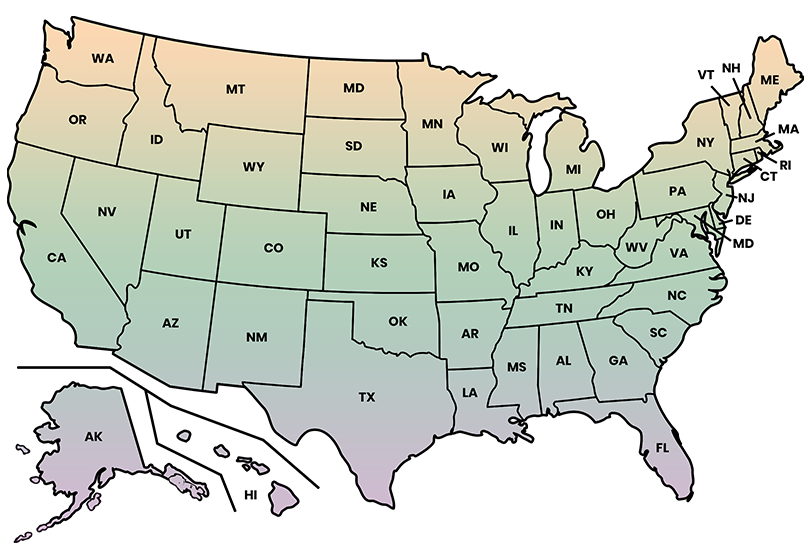Create Your Paystub in 3 Easy Steps



- 1. Provide Information
- 2. Preview Paystub
- 3. Download Stub!
Welcome to the Federal Income Tax Guide for Employers! This comprehensive resource is designed to provide employers with all the essential information they need to navigate their federal income tax obligations effectively. Whether you're a small business owner, HR manager, or payroll administrator, understanding and complying with federal tax laws is crucial for the success and compliance of your business.
Table of Contents
Understanding Federal Income Tax
Federal income tax is a tax levied by the Internal Revenue Service (IRS) on the income of individuals and businesses. Employers have the responsibility of withholding federal income tax from their employees' wages and remitting it to the IRS on their behalf.
Importance of Understanding Federal Income Tax
Understanding federal income tax is essential for employers to ensure compliance with IRS regulations, avoid penalties, and maintain accurate financial records. Employers must stay informed about changes in tax laws and regulations that may affect their tax withholding and reporting responsibilities.
Employer Identification Number (EIN)
Before hiring employees and withholding taxes, employers must obtain an Employer Identification Number (EIN) from the IRS. This unique identifier is used for tax reporting purposes and is necessary for conducting business operations legally.
Obtaining an EIN
Employers can apply for an EIN online through the IRS website or by completing Form SS-4 and submitting it via mail or fax. The EIN is typically issued immediately upon completion of the online application or within a few weeks for mailed or faxed applications.
Withholding Federal Income Tax
Employers are required to withhold federal income tax from their employees' wages based on the information provided on Form W-4. It's crucial to calculate the correct withholding amount to ensure compliance and avoid penalties.
Steps for Withholding Federal Income Tax
- Employee Completes Form W-4 : Upon hiring, employees must fill out Form W-4, Employee's Withholding Certificate, which indicates their filing status, number of allowances, and any additional withholding amounts.
- Calculate Withholding : Employers use the information provided on Form W-4 and the IRS withholding tables to calculate the amount of federal income tax to withhold from each paycheck.
- Withhold Taxes : Employers deduct the calculated amount of federal income tax from employees' wages and ensure it’s clearly reflected on each paystub before remitting it to the IRS.
Federal Income Tax Brackets
Federal income tax brackets determine the rate at which income is taxed. Employers must use the appropriate tax tables provided by the IRS to calculate the amount of federal income tax to withhold from employee wages based on their income level and filing status.
Understanding Federal Income Tax Brackets for 2024 and 2025
Federal income tax brackets are crucial for determining the rate at which your income is taxed. These brackets are progressive, meaning that as your income increases, so does the tax rate on the next layer of your income. When your income jumps to a higher tax bracket, you only pay the higher rate on the portion of income that falls within that bracket. It's important to note that your filing status—such as single, married filing jointly, married filing separately, or head of household—affects the income ranges for each tax rate, thereby influencing your overall tax liability.
2024 Federal Income Tax Rates
The IRS has announced inflation adjustments for tax year 2024, affecting several tax provisions: The tax year 2024 adjustments described below generally apply to income tax returns filed in 2025. The tax items for tax year 2024 of greatest interest to most taxpayers include the following dollar amounts:
Standard Deduction:
For the tax year 2024, the standard deduction amounts have been updated as follows:
- Married couples filing jointly: $29,200 (up from $27,700 in 2023)
- Single taxpayers and married individuals filing separately: $14,600 (up from $13,850 in 2023)
- Heads of households: $21,900 (up from $20,800 in 2023)
2024 Federal Income Tax Rates for Single Filers and Married Couples Filing Jointly
For the tax year 2024, the marginal tax rates for single filers and married couples filing jointly are as follows:
| Tax Rate | Income Range (Single) | Income Range (Married Filing Jointly) |
|---|---|---|
| 10% | Up to $11,600 | Up to $23,200 |
| 12% | $11,601 to $47,150 | $23,201 to $94,300 |
| 22% | $47,151 to $100,525 | $94,301 to $191,950 |
| 24% | $100,526 to $191,950 | $191,951 to $383,900 |
| 32% | $191,951 to $243,725 | $383,901 to $487,450 |
| 35% | $243,726 to $609,350 | $487,451 to $731,200 |
| 37% | Over $609,350 | Over $731,200 |
2025 Federal Income Tax Rates
The IRS has announced adjustments for tax year 2025, which will impact income tax returns filed in 2026. These changes, especially regarding standard deductions and marginal tax rates, are significant for many taxpayers.
Standard Deductions for 2025
The standard deduction amounts for tax year 2025 have been adjusted as follows:
| Filing Status | Standard Deduction (2025) |
|---|---|
| Single/Married Filing Separately | $15,000 |
| Married Filing Jointly | $30,000 |
| Head of Household | $22,500 |
Marginal Tax Rates for 2025
For tax year 2025, the marginal tax rates remain as follows:
| Tax Rate | Income Range (Single) | Income Range (Married Filing Jointly) |
|---|---|---|
| 10% | Up to $11,925 | Up to $23,850 |
| 12% | $11,926 - $48,475 | $23,851 - $96,950 |
| 22% | $48,476 - $103,350 | $96,951 - $206,700 |
| 24% | $103,351 - $197,300 | $206,701 - $394,600 |
| 32% | $197,301 - $250,525 | $394,601 - $501,050 |
| 35% | $250,526 - $626,350 | $501,051 - $751,600 |
| 37% | Over $626,350 | Over $751,600 |
These adjustments provide increased standard deductions and updated income thresholds for tax brackets, reflecting cost-of-living changes. For 2025, the highest marginal tax rate remains 37%, and the exemption and deduction limits are adjusted to accommodate inflation.
The Alternative Minimum Tax (AMT) Exemption Amounts and Phase-Out Thresholds for tax years 2024 and 2025:
| Filing Status | AMT Exemption Amount for 2024 | AMT Phase-Out Begins for 2024 | AMT Exemption Amount for 2025 | AMT Phase-Out Begins for 2025 |
|---|---|---|---|---|
| Single (Unmarried Individuals) | $85,700 | $609,350 | $88,100 | $626,350 |
| Married Filing Separately | $42,850 | $609,350 | $68,650 | $626,350 |
| Married Filing Jointly | $126,500 | $1,218,700 | $137,000 | $1,252,700 |
- Exemption: The amount you can exclude from the AMT.
- Phase-Out: The income level at which the exemption starts to decrease.
Earned Income Tax Credit (EITC):
For the 2025 tax year, the maximum Earned Income Tax Credit (EITC) for eligible taxpayers with three or more qualifying children has increased to $8,046, up from $7,830 in 2024. The updated revenue procedure outlines income limits, phase-out thresholds, and maximum credit amounts for other qualifying categories.
Qualified Transportation Fringe Benefit:
In 2025, the monthly limit for qualified transportation fringe benefits, including qualified parking, will increase to $325, up from $315 in 2024. This adjustment reflects updated IRS guidelines for commuter benefits.
Health Flexible Spending Arrangements:
Starting in 2025, employees can contribute up to $3,300 to health flexible spending arrangements (FSAs), an increase from the $3,200 limit in 2024. For cafeteria plans allowing carryovers, the maximum amount that can be rolled over rises to $660, up from $640.
Medical Saving Account:
For 2025, individuals with self-only coverage in a medical savings account (MSA) must have an annual deductible between $2,850 and $4,300, reflecting increases of $50 and $150, respectively, from the prior year. The out-of-pocket maximum for self-only coverage rises to $5,700, up from $5,550.
For family coverage, the minimum deductible increases to $5,700 from $5,550, while the maximum deductible is set at $8,550, a $200 increase from 2024. The out-of-pocket expense cap for family plans rises to $10,500, compared to $10,200 in the previous year.
Foreign Earned Income Exclusion:
In 2025, the foreign earned income exclusion will rise to $130,000, up from $126,500 in 2024, allowing qualifying taxpayers to exclude a higher amount of foreign income from U.S. taxation.
Estate Tax Exclusion:
The estate tax exemption for individuals who pass away in 2025 increases to $13,990,000, up from $13,610,000 in 2024, allowing for greater tax-free wealth transfer.
Annual Gift Tax Exclusion:
In 2025, the annual gift tax exclusion increases to $19,000, up from $18,000 in 2024, allowing individuals to gift more tax-free.
Adoption Credit:
For the 2025 tax year, the maximum adoption credit for children with special needs rises to $17,280, up from $16,810 in 2024, covering qualified adoption expenses up to that amount.
Reporting and Paying Taxes
Employers must report and remit withheld federal income taxes to the IRS on a regular basis. This involves filing various tax forms and making payments electronically or by mail, depending on the reporting requirements.
Reporting Requirements
Form 941 : Employers must file Form 941, Employer's Quarterly Federal Tax Return, to report wages paid and federal income tax withheld from employees' paychecks.
Form 1099-NEC : Employers must provide Form 1099-NEC to report payments made to independent contractors or other non-employee individuals for services rendered in the course of business.
Payment Methods
Electronic Funds Transfer (EFT) : Employers can use the Electronic Federal Tax Payment System (EFTPS) to make secure electronic payments to the IRS.
Check or Money Order : Alternatively, employers can mail a check or money order along with the appropriate tax forms to the IRS.
Year-End Responsibilities
For your Year-End Responsibilities, it's crucial to complete and submit Form W-2, which details wages, tips, and other compensation, including non cash payments, provided to each employee within your business. Utilize Form W-3, the Transmittal of Wage and Tax Statements, to forward the Forms W-2 to the Social Security Administration—and create paystub records that ensure those details are complete and accurate. Additionally, ensure you furnish a copy of Form W-2 to each employee, enabling them to accurately report the wages you've paid them.
Forms to Provide and File
When it comes to federal income tax obligations as an employer in the United States, here are the forms you'll typically deal with:
Form W-2: This form is provided to employees and reports their annual wages, along with the amount of federal income tax, Social Security tax, and Medicare tax withheld from their paychecks.
Form W-3 : Businesses that file employee W-2s can streamline wage and income reporting to the Social Security Administration with Form W-3. This transmittal form summarizes the information on all W-2s, ensuring accurate reporting. It must be completed when filing paper Copy A of Form(s) W-2, ensuring compliance with IRS standards and accurate record-keeping.
Form 941 : Employers use this form to report income taxes, Social Security tax, or Medicare tax withheld from employee paychecks. It's typically filed quarterly.
Form 944 : Some small employers may be eligible to file an annual Form 944 instead of quarterly Form 941. This form is used to report income taxes, Social Security tax, and Medicare tax withheld from employee paychecks on an annual basis.
These forms are essential for fulfilling your federal income tax obligations as an employer and ensuring compliance with IRS regulations. Make sure to file them accurately and on time to avoid penalties or fines.
Recordkeeping Requirements
Employers must maintain accurate records of employee wages, taxes withheld, and tax payments for a specified period. These records serve as evidence of compliance with federal income tax laws and may be subject to IRS review in the event of an audit.
Required Records
- Employee information (name, address, Social Security Number)
- Dates and amounts of wages paid
- Copies of filed tax forms (Forms W-2, 941, 1099-NEC, etc.)
- Dates and amounts of tax deposits
Compliance and Audits
Ensuring compliance with federal income tax laws is essential for employers to avoid penalties and fines. The IRS may conduct audits to verify the accuracy of tax reporting and withholding, so it's important to maintain thorough and accurate records.
Potential Penalties
- Failure to File : Employers may incur penalties for late or incomplete filing of tax returns.
- Failure to Pay : Penalties may be imposed for late payment or underpayment of federal income taxes.
- Accuracy-Related Penaltie : Employers may be subject to penalties for inaccuracies or errors in tax reporting and withholding.
Simplify your paystub reporting with SecurePayStubs!
Our Paystub generator platform simplifies the process, ensuring accuracy and compliance effortlessly.
Here's how we can assist you:
Effortless Display : Easily highlight vital details, including federal income tax, on pay stubs. Say goodbye to manual calculations and reduce errors.
Comprehensive Breakdowns : Generate clear and precise pay stubs that provide employees with a detailed breakdown of their earnings, including federal income tax deductions.
Regulatory Compliance : Rest assured knowing that our platform ensures adherence to tax regulations, maintaining transparency in pay stub processing, including accurate federal income tax reporting.
Make paystub reporting a seamless experience with SecurePayStubs. Start accurately documenting your employees' earnings today!
This article has been updated from its original publication date of March 10, 2025.




